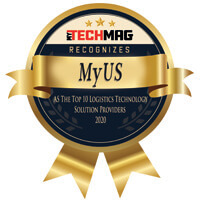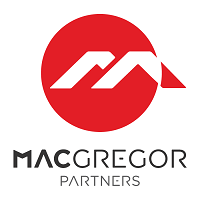
“Sigfox Canada leverages low-power wide-area network (LPWAN) technology, (which they refer to as 0G Technology), in their National IoT network they have built from coast-to-coast in Canada. This network uses Sigfox proprietary technology and has the capacity to support millions of IoT sensors. There is a current ecosystem of over 1000+ different Sigfox enabled IoT sensors capable of communicating information on almost any aspect of a customer’s business. ”
According to Kent Rawlings, President of Sigfox Canada, the challenge faced by businesses is consistent everywhere. How do they gain efficiencies with more information, and how do they generate an ROI for the deployment of IoT technology, that allows them to receive and interpret more information? Sigfox is a dedicated wireless network provider specializing in connecting simple, low-powered, low-cost Internet of Things (loT) devices to the internet. Unlike legacy connectivity, Sigfox’s unique device-to-cloud communications allow enterprises to gain insights into areas of their operations and assets, opening new opportunities for digital transformation.
The company leverages 0G technology (low-power wide-area network (LPWAN) technology), with the capacity to support millions of IoT sensors, and benefits from a current ecosystem of over 1000+ different Sigfox IoT enabled sensors to provide connectivity solutions from coast-to-coast throughout Canada.
The company uses radio frequency (RF) technology for its devices. Kent states RF has been around for a hundred years but has not been utilized to its full potential simply because it was previously very expensive to deploy. The patented Sigfox technology has been able to significantly decrease the cost of enabling IoT devices to communicate their information to businesses, this has been accomplished in two ways: development of low cost, high capacity radio receivers, referred to as base stations, that are capable of receiving messages from IoT devices over very large geographic areas. And secondly, through the design of the technical specifications for communication chips that allow
devices to communicate over the 0G network using the Sigfox technology. By enabling 3rd party chip manufacturers to develop chips embedded with the Sigfox technology it’s easier for device manufacturers to enable their devices to communicate over the 0G network. This is important because it means the Sigfox ecosystem of devices will constantly be growing as manufacturers around the world continue to build new devices, or enable older devices to communicate over the 0G network.
Thanks to Sigfox, and the chip manufacturers, enabling an IoT device to communicate on the 0G network costs roughly $3 Canadian to the device manufacturer; if a manufacturer has a device and wants that device to communicate their information, they simply embed these chips into their device and then have it certified by Sigfox to communicate over the 0G network. Once certified that device can transmit data over the 0G Network in any of the 76 countries where the 0G Network has been deployed by other operators like Sigfox Canada. So how do customers generate ROI? Well, they generate ROI by deploying the most cost-effective solution to address their use case. Sigfox can help their customers identify the best solution.
Sigfox Canada can provide coverage almost anywhere in Canada, and has extensive experience “building a network.” The 0G network in Canada utilizes the patented Sigfox radio receivers, also known as macro base stations. These macro base stations enable the company to provide 0G network coverage to roughly four to six kilometres indoors, and eight to 10 kilometres of outdoor range, depending on where the base station is located. It can process ~10 million messages per day, and the cost of deploying one macro base station is less than $10 000 Canadian. The company also has other technologies to support their base stations, including a mini base station, which has less coverage than the macro but can process about a million messages per day. Another device, called the Repeater, captures the messages and then forwards them to the closest base station. The Repeater only draws about six to eight watts of power, which means it could be deployed almost anywhere. “You could put it in a field and have a solar panel and a battery to power it, and it would be able to capture messages and send them. So, the Sigfox hardware line-up for receiving messages is quite diverse and able to provide coverage almost anywhere that you would need it.”
Sigfox is working closely with a company that manufactures shopping carts. “Every year, roughly 18 to 22% of shopping carts will go missing from a parking lot or a store. And this requires the company to produce more shopping carts, use up metal, use up resources, energy,” explains Kent. “They wanted the ability to put a tracking device into the shopping cart, to identify when it leaves the parking lot and where it is located so that they can retrieve the shopping cart and put it back into inventory.” Sigfox technology has helped the company enhance their ROI as they can now track and account for every shopping cart. By keeping their inventory intact, they’ll experience reduced costs and less waste, contributing towards a sustainable environment.
Looking ahead, Sigfox is committed to providing reliable solutions and expanding their ecosystem of devices. The company is focused on servicing industries such as agriculture, utilities, healthcare, logistics, smart city, smart building, to name a few, and enhancing their productivity. “As these industries continue to grow, they’re going to use Sigfox technology to deliver that information. There’s an endless amount of growth coming from the technology, and we continue to deliver innovative technology at a lower cost, increasing ROI for customers.”







